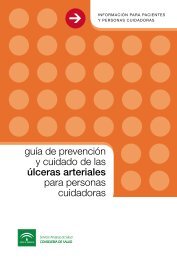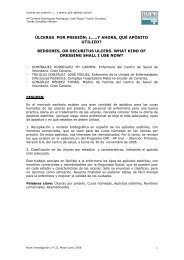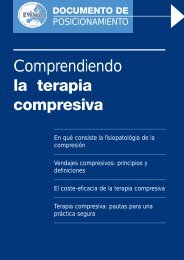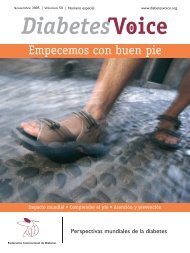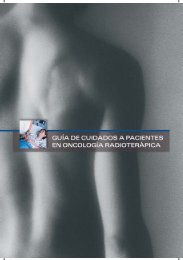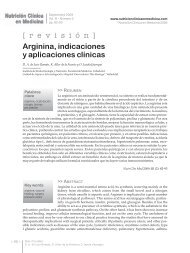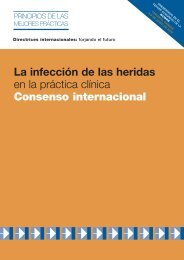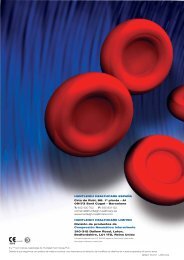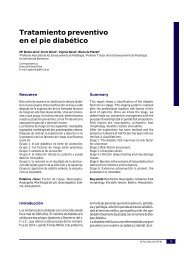Descargar - Úlceras.net
Descargar - Úlceras.net
Descargar - Úlceras.net
- No tags were found...
Create successful ePaper yourself
Turn your PDF publications into a flip-book with our unique Google optimized e-Paper software.
122 ■ PIE DIABÉTICOFigure 2. Multiplace hyperbaric chamber installedin our Institution-inner view.tion. His surgical successes led to the constructionof a portable hyperbaric chamber wherehe performed surgical interventions (2).This scientific peak in hyperbaric medicinecontributed paradoxically to the beginning ofits first decline. In 1921, Cunningham constructeda hyperbaric chamber with 20 metersof diameter, in Cleveland Ohio. Inside, privaterooms, a dining room, and a smoke room weredistributed in five floors. The project promoterpromised cure for diabetes, cancer, arterialhypertension and many other diseases. Afternine years of activity without credible scientificevidence, «Cunningham’s sanatorium» was shutdownand afterwards demolished (4).The potential fire and explosion hazardassociated to HBOT limited for years its‘ use.Several projects developed in the 1930’s werenot applied to clinical practice due to safetyissues in the administration of hyperbaricoxygen. After these technical limitations weresurpassed, many personalities dedicatedthemselves to HBOT but only Ito Boerema, anotable Professor of Surgery in the Universityof Amsterdam, Netherlands, possessed thegeniality that guaranteed him the epithet of«Father of Modern Hyperbaric Medicine». In1960, along with his collaborators, he pu -blished an article entitled «Life withoutblood» (5). This scientific publicationrelaunched credibility and investigation onHBOT. In this famous article, the authorsdescribed how three pigs were kept aliveafter replacing all circulating blood by plasma,under HBOT. This work marks the beginningof the evidence-based HBOT era and allowedProfessor Boerema to perform several cardiacsurgeries, like the correction of a greatvessel transposition, Fallot’s tetralogy and pulmonarystenosis in a hyperbaric operatingtheatre specially built for the purpose (2).Since the beginning of the 21 st century,the number of hyperbaric centers, scientificsocieties and published articles has grownlargely. Hyperbaric medicine is recognized as amedical subspecialty in several countries.Therapeutical indications have been extensivelyinvestigated and are explained by tenmain physiological principles.PHYSIOLOGICAL PRINCIPLES1. Plasma-dissoluted oxygen increase - In isobaricconditions, with an inspired fraction of oxygen(FiO 2) of 21%, if one excludes the oxygencontained in the erythrocytes, plasmacontains 0.3% of dissolved oxygen. This percentageincreases to 1.88% with a FiO 2of100%, which is equivalent to an arterialoxygen partial pressure (PaO 2) of673mmHg, at sea level pressure conditions.When pressure is elevated, the blood-dissolvedfraction of gas is increased. Erythrocyte-bindedoxygen remains unchanged asthese are already completely saturated. Inconsequence, at a pressure of 3 absoluteatmospheres (ATA), for example, plasmadissolvedoxygen will increase to 6%, andPaO 2would be 2 193 mmHg 6 .2. Reduction of gaseous bubbles and circulatoryobstruction-Boyle-Mariotte law states thatvolume varies inversely to pressure. Any





